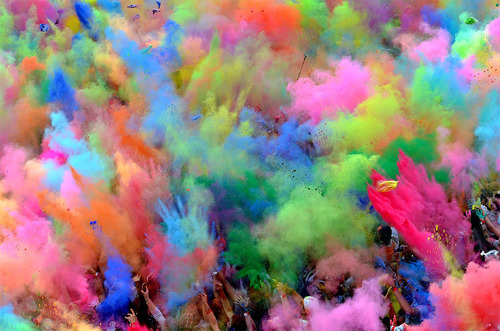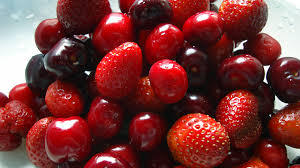
Vocabulary feelings and personal states
1. Work in pair. Which colours do you associate with the words anger and love?
2. Choose the correct word for each definition.
Passion / prosperity for financial succes
Love / luck when things go well without planning them.
Courage / anger The abitity to face dangerous situations without being afraid.
Happiness / wisdom the ability to make good decisions based on experience
Knowledge/ sorrow information and facts that a person has
Power / sadness a feeling of unhappy
Joy / mourning a feeling of great sadness when someone dies
Pride / envy a feeling of want what someone else has
Please write which colour you prefer for these words
wisdom
peace
joy
nature
love
funeral
freedom
Read the text it is full of information about colour!
Colours in Different Cultures
Colours are important in communications. Feelings, ideas, and emotions can be expressed with colours. When designing websites or brochures for International markets, colours are crucial. Not paying attention to them could result in expensive and often embarrassing problems
Here are a few things about colours you might find useful:

Red is the colour of love in most cultures: Chinese brides wear red for their wedding, and red roses are the most common gift for St. Valentine’s Day. Red is also the colour of communism – the flags of China and Vietnam are red. The Former Soviet Union’s flag used to be red too. The army of the Soviet Union was known as the “Red Army”.
In Christianity, green and red are associated with Christmas. There is an Easter tradition to colour eggs red – red in this case represents the blood of Christ.
Satan is also most of the time represented by the colour red in icons and popular culture. On the other hand, Santa Claus wears red and white for Christmas.
In China, red paper and red envelopes are frequently used to wrap gifts of money. Though, on the negative side, obituaries are traditionally written in red ink, and to write someone’s name in red signals that you are either cutting them out of your life, or that they have died.
Red is also used to indicate emergency and warnings. Red is the colour for all Stop signs around the World. However, the first Stop sign had black letters on a white background until 1924 when white was replaced with yellow. It wasn’t until 954 that all stop signs became white and red.
In North America, because of the colour of the United States dollar bill, green is the colour of wealth and money. Also, the colour green is always associated with nature.

Green is considered the traditional colour of Islam. It is also the national colour of Egypt. But don’t create packaging or mail packages in green: It’s not well-received.
In some Asian cultures the colour green is often used as a symbol of sickness.
Green is a symbol of Ireland; green is a strong trend in the Irish holiday St. Patrick’s Day.

While Westerns see white as the colour of purity and innocence, in some Asian cultures ( China, Vietnam, and Korea), white is the colour of death and mourning.
In India, people wear white after the death of a family member.
White is the traditional colour of bridal dresses in Western cultures. A woman wearing white will be seen as a bride on a Western website, and as a person in mourning on an Eastern website.
blue, Iran: mourning China: immortality; workers’ uniforms; blue-coloured gifts are associated with death
Hinduism: the colour of Krishna Egypt: dark blue is a colour of mourning.
Black is the colour of mourning in Western cultures;
Black is also the most common colour used for clothing for formal occasions; black is also worn by priests.
In the Japanese culture, until the nineteenth century, some women used to dye their teeth black because it was thought that black teeth would make a woman look beautiful.
The colours orange and black are the colours of Halloween because orange is the colour of pumpkins and black is the colour of night and darkness.
Orange is the national colour of the Netherlands, referring to the royal family, the House of Orange-Nassau.


Look at the questions in the quiz Colours and their meaning. Match the questions (1-7) with these statements (a-c)
a We use do and does to make questions in the present simple.
b. When we make questions with be or modal verbs, we invert the subject and the verbç
c. When the question word is the subject of the question, we don't invert the subject and the verb

It's time to mix our knowledge and sharing ! Have fun :)
You listened and watched a video. While you were doing these, you also read the main things which were wanted to given.
Firstly, Just retell us verbally what is told on video by recording your voice or write a summary of the video. Upload your recordings and summaries to comments and share with us.
--------------------------------------------------------------------------------------

Secondly, Try to remind various meanings of the colour "red" in different countries and cultures. Write them to comments.
-------------------------------------------------------------------------------------

Thirdly, Remind the flags of Papua New Guinea,Australia Aboriginal,Angola and Soviet Union. Where did the colours come to on it? What is story of that flag? Choose one of these flags and tell us its story related to the video.
---------------------------------------------------------------------------------------

Finally, Tell us the meanings of colours in your country and culture. In additionaly, learn story of the flag of your own country.
-----------------------------------------------------------------------------------------

In our flag: red represents blood and white represents the stars.
YanıtlaSil